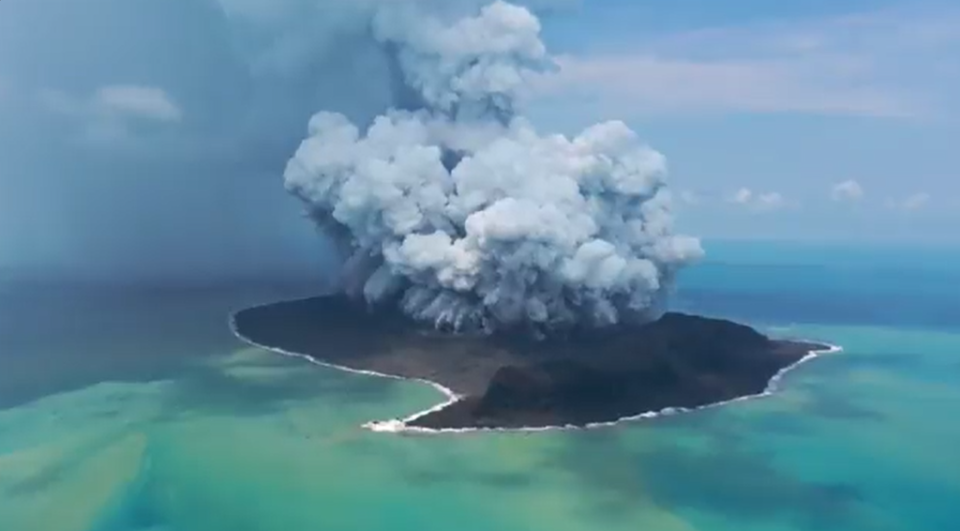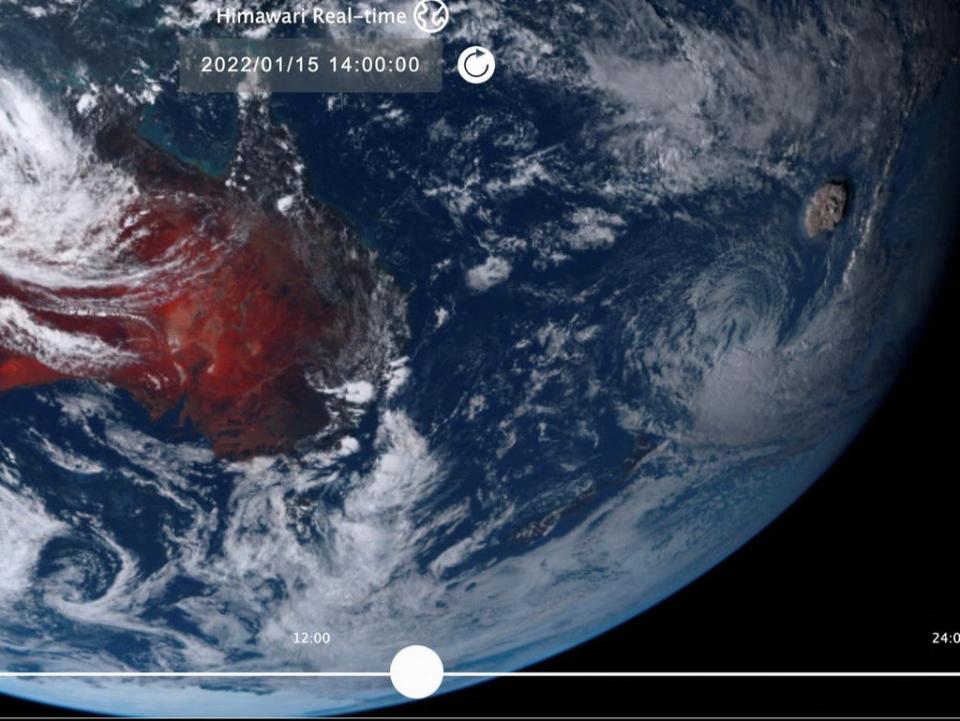Tonga turned into ‘moonscape’ by ash from ‘once-in-millennium’ volcanic eruption
Ash from an erupted underwater volcano has made Tonga look “like a moonscape,” according to residents of the Pacific island.
Particles emitted by the eruption of the Hunga-Tonga-Hunga-Ha’apai volcano – a “once-in-a-millennium” event that has been visible from outer space – darkened the sky and contaminated the water supply.
Locals have said that the island now looks like the surface of the moon after being coated in a layer of volcanic ash, the BBC reported.
Fresh water is now vital on the island, New Zealand prime minister Jacinda Ardern said, as authorities told the 105,000 residents to only drink bottled water and to wear face masks to protect their airways.
New Zealand has sent a plane to Tonga to assess the scale of the damage after satellite images captured the explosion sending plumes of smoke and volcanic ash into the air about 12 miles above sea level.
Experts say the eruption, which triggered a 7.4 magnitude earthquake, was one of the most violent in the region in decades.

The eruption had sparked a tsunami with 1.2 metre-high waves that have crashed into homes on the coast of Tonga – which lies 1,481 miles northeast of New Zealand – as well as several South Pacific islands.
People have fled low-lying areas in fear that the waves would get bigger, footage posted online shows.
Residents have been cut off from the rest of the world after the vast majority – if not all – the power, internet and telephone lines went down on Saturday at about 6.40pm local time.
Some parts of the island are seeing the power restored and some mobile phones were beginning to work again, Ms Ardern said.
But families and friends of those who have not been contactable have become increasingly concerned for their loved-ones’ safety, as casualty reports had yet to come through.
There are no official reports of injuries or deaths as contact has not been established with outlying coastal areas beyond the capital Nuku’alofa and closer to the volcano, Ms Ardern told a news conference.
“Nuku’alofa is covered in thick plumes of volcanic dust but otherwise conditions are calm and stable,” she said.
“There are parts of Tonga where we just don’t know yet... we just haven’t established communication.”

Experts have said that the volcano rarely erupts, but that it can have “several weeks or even years” of “unrest” once it does.
Tonga eruptions expert Professor Shane Cronin, from the University of Auckland, has said: “This is one of the massive explosions the volcano is capable of producing roughly every thousand years.
“We could be in for several weeks or even years of major volcanic unrest from the Hunga-Tonga-Hunga-Ha’apai volcano.”
Prof Cronin also said: “Help will be needed to restore drinking water supplies.
“People of Tonga must also remain vigilant for further eruptions and especially tsunami with short notice and should avoid low lying areas.”
The event has triggered warnings in a number of countries including the US, where some flooding was seen in California, and Japan.
Powerful waves were registered in countries including Japan, Australia, and New Zealand.
Shockwaves have also been registered by observation sites in the UK, some 10,000 miles away from Tonga, according to the Met Office.
UK Foreign Office minister Zac Goldsmith called the situation in Tonga “shocking” and said Britain stood “ready to help and support our Commonwealth friend and partner in any way we can”.

